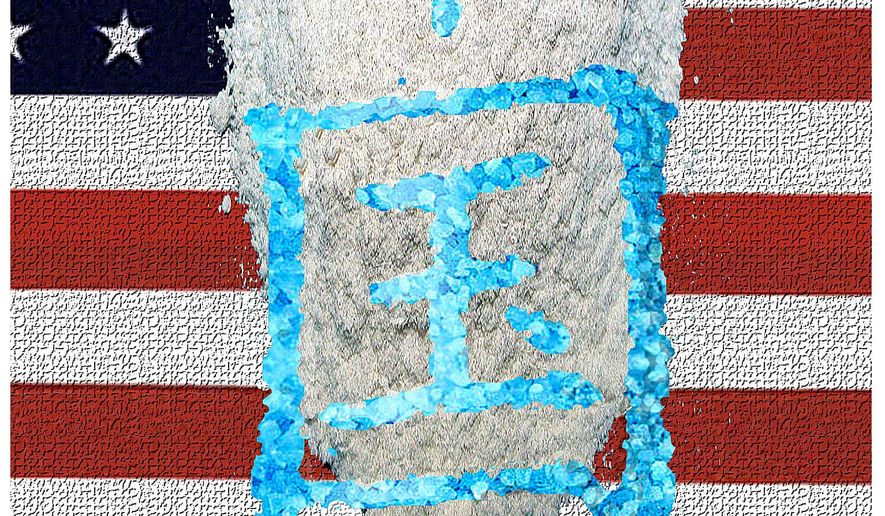OPINION:
The trail of poison that led to the death of rock star Prince and thousands of other Americans begins in China, which President Obama will visit on Sept. 2. According the State Department’s 2016 Narcotics Strategy Report, “China has become a hub for illicit drug consumption, drug and precursor chemical trafficking, and money laundering activities.”
One way or the other, either as direct sellers of the finished product or as suppliers of precursor chemicals used to produce the finished product, Chinese narcotics traffickers have a hand thrust deeply into the very lucrative drug trade to the United States. The best estimate, from a RAND Corp. study of a few years ago, suggested that the retail illicit drug market in the United States is worth about $100 billion annually. If the Chinese take is only 5 percent, then it would be worth $5 billion a year.
With the traditional illicit narcotics such as heroin, cocaine and methamphetamine, China’s primary role is that of a chemical precursor provider to the Mexican drug cartels. As the State Department report states, “China remains one of the world’s top producers and exporters of precursor chemicals.”
There is at least one report of Chinese produced acetic anhydride, the precursor for heroin, showing up in an industrial-scale drug laboratory that Mexican authorities busted in 2011. But it is in Mexican methamphetamine production where the role of Chinese precursors is clearest: “China remains the primary source of the precursor chemicals used to manufacture methamphetamine consumed in the United States and is one of the world’s top producers and exporters of precursor chemicals,” according to the State Department. In some cases, the Chinese precursors are shipped directly to Mexico where meth is manufactured, but there are even reports of the precursors coming in through American West Coast ports and then trucked to Mexico. The Knights Templar is a Mexican drug cartel and, according to The Wall Street Journal, members “were able to control [Mexican] iron ore mines, sending metal to China and importing precursor chemicals, which they then used to make methamphetamines.” Unlike heroin, to some extent, meth is so destructive to brain cells that the user often never fully recovers even if he or she gets clean.
The substance that killed Prince was a so-called “designer drug,” meaning it was made in a laboratory and wasn’t derived from a plant like heroin or cocaine. In this case the drug was “fentanyl.” Prince was found in a home elevator with his clothes, even his socks, on inside out and backwards. He had been dead about six hours. According to press reports, he weighed 112 lbs. at the time of his death, but the amount of drug in his system would have killed anyone of any size and weight. Fentanyl is 40-50 times more potent than heroin. There are several ways of ingesting fentanyl but taking it in pill form, often disguised as oxycodone, seems the most common, and that’s what authorities think killed Prince.
All illicit fentanyl comes into the United States from China, either directly or indirectly through the Mexican cartels. Fentanyl’s attractiveness to the Mexican cartels or anyone else in the distribution chain is its mark-up. It’s cheap to make and “immensely profitable,” as The New York Times recently noted. Whereas a kilo of heroin or cocaine produces a profit in the tens of thousands of dollars, once a kilo of fentanyl is cut, the profit is well over a million-and-a-half dollars. It can even be ordered over the internet from Chinese manufacturers selling “research chemicals” and delivered by express services. Authorities believe that fentanyl is to blame for the spike in drug overdoses around the country. Some of the victims die as Prince did, while others are injured for life. Even babies are being born hooked on it, often prematurely.
South Florida has been especially hard hit by another Chinese designer drug that goes by the street name of “flakka.” The effects of it are very dramatic because it makes the victims paranoid, violent and with superhuman strength. One of the others goes by the street name of “K-2” and turns its victims into zombies.
Last summer The New York Times interviewed a former Mexican ambassador to China. During his service in the country, the ambassador had tried valiantly to plug the Chinese pipeline, but he reported, “The Chinese never showed any willingness to cooperate on the flow of precursors to Mexico.”
The simple fact is that the wave of illegal drugs coming into the United States from China and Mexico is the leading public health issue facing the nation. We are watching a generation of American young people getting wiped out at Vietnam War levels of casualties. Would it be too much for President Obama to remind China’s leader Xi Jinping of China’s own suffering from drugs during the 19th century?
• William C. Triplett II is the former chief Republican counsel to the Senate Foreign Relations Committee.




Please read our comment policy before commenting.